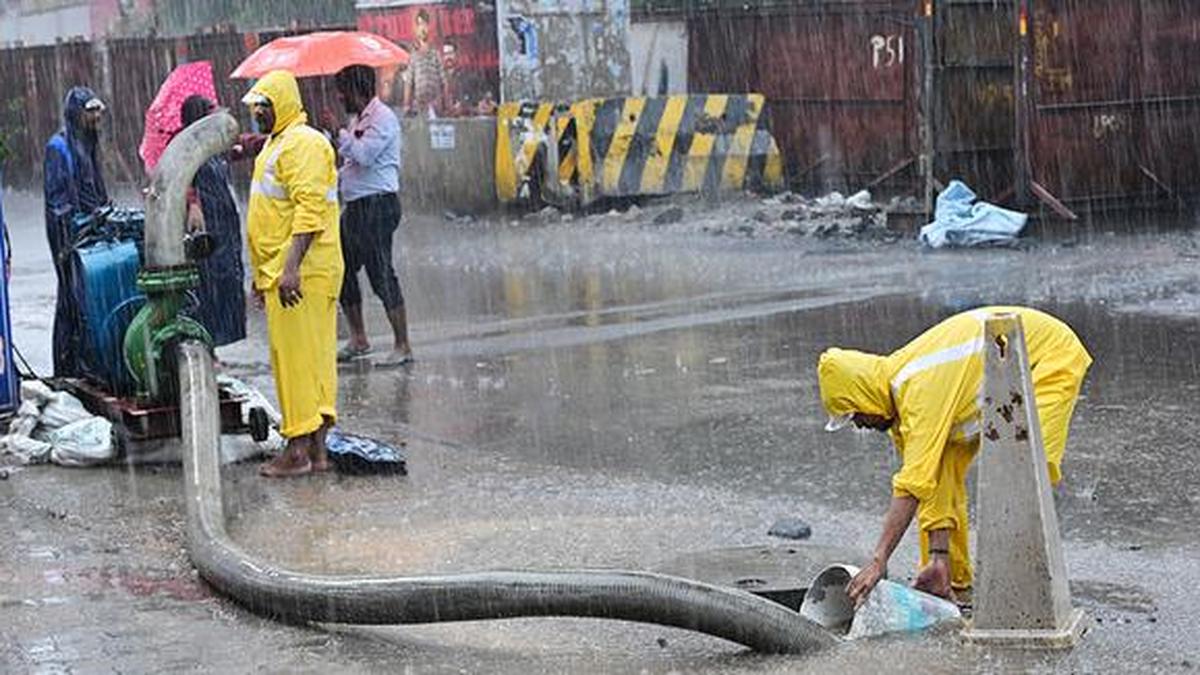Copyright thehindu

Low-lying, Elaya Street junction in R.K. Nagar has been a bugbear every monsoon for residents and Greater Chennai Corporation. Rainwater from VOC Nagar, Thiruvalluvar Nagar and surrounding areas would pour into it. This monsoon, a number of interventions are making sure the water level at this junction does not cause any hindrance to the movement of people and vehicles. A 280 HP submersible pump is stationed at the junction. A sump and a well ensures water drains easily. If that is not enough then additional drains and an additional pump have been put into service to ensure excess water goes down easily. An executive engineer says that because of various measures taken well ahead of the monsoon the inundation time has reduced at this vulnerable spot by almost half. “In the previous monsoon, water would stay on for a day. Now in hours time water is drained out,” says the engineer. With the help of GPS-enabled tracking devices installed in portable water pumps, Greater Chennai Corporation officials are monitoring many such areas prone to flooding during heavy rains. “Until last year, they arrived at a decision based on the feedback we presented. There was no mechanism to cross check whether the information that was fed was right or wrong. Suppose three 100 HP motors are stationed on the road they can monitor whether it is being put into service and for how many hours it ran etc.,” says the engineer with Zone I. A clause in the tender Use of GPS in dewatering equipments such as pumps/ motors and tractors saw a mention in the GCC tenders from this year. The move is aimed at ensuring accountability. “In the previous years, engineers would manually verify and cross-verify with us if an area is getting flooded or if the pumps are running effectively. Now in real time they can monitor the pump functioning,” says an entity associated with the industry. GPS when installed in the motors and pumps helps to correlate the info that GCC is getting through other platforms. This can also be used by the department to give a status report on an area. While technology can enhance flood mitigation through advanced monitoring, it can only be effective with other measures on the ground and can also fail at times. For example, in 2015, the city went without power for an extended period, and in such scenarios, one would need to look beyond this technology, say experts.



